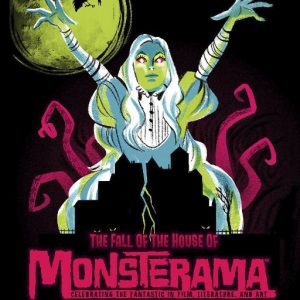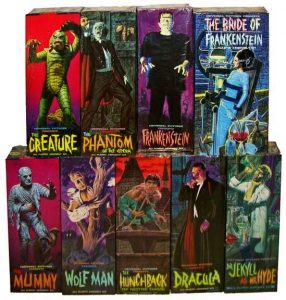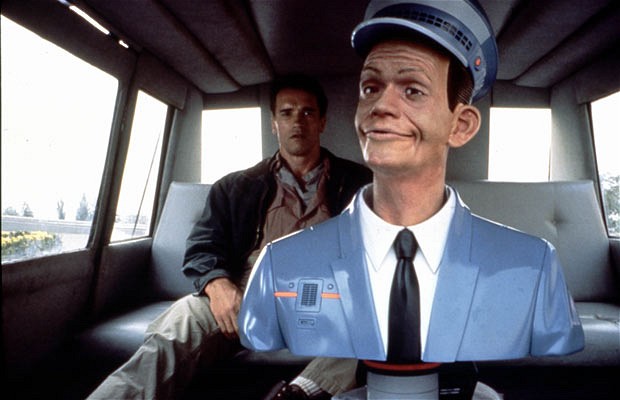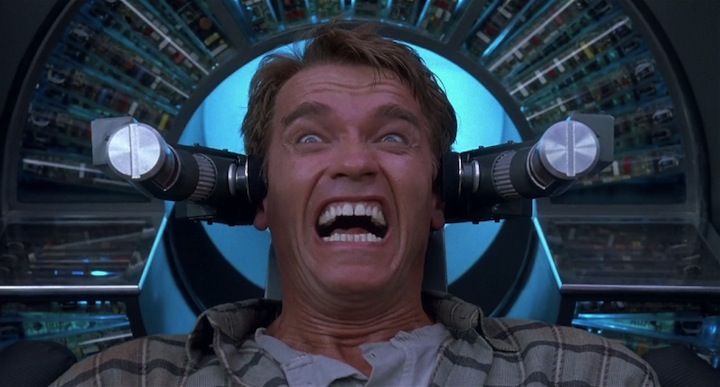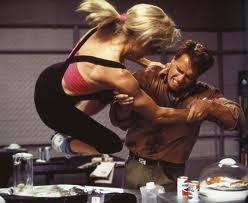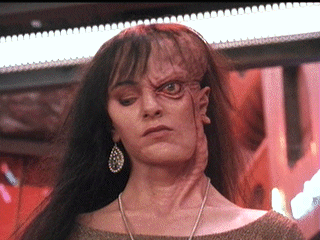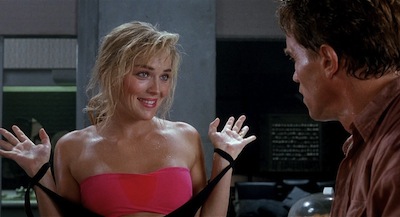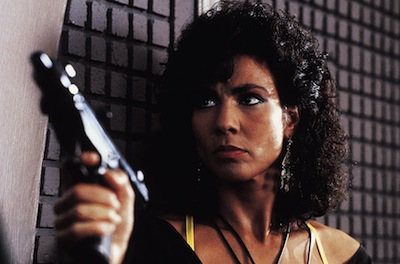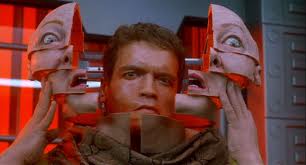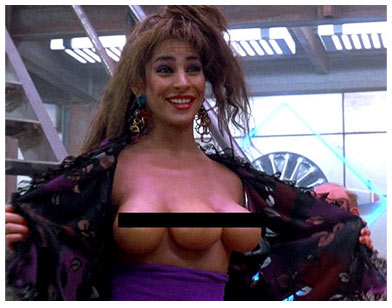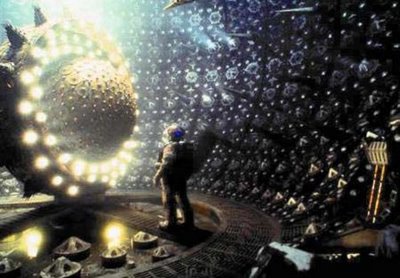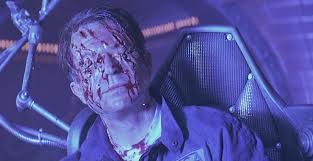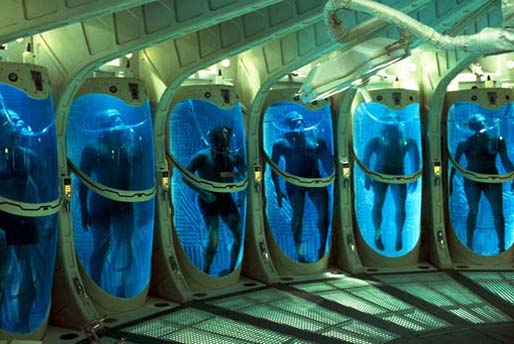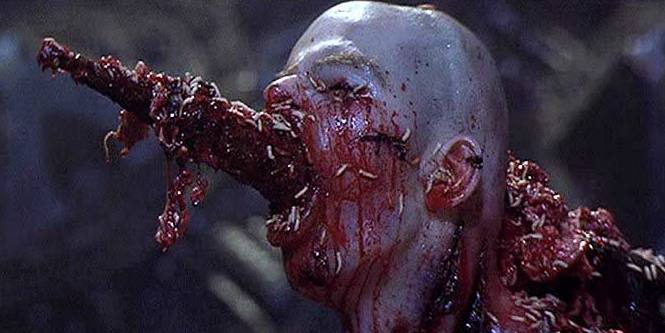by Melanie Crew
Managing Editor
Anthony Taylor, official Licensing & Brand Manager for the Bram Stoker Estate, author and one helluva monster-kid, co-chairs Atlanta’s favorite classic monster convention, MONSTERAMA, creeping into its fourth hellacious year at the Atlanta Marriott Alpharetta this weekend, Friday – Sunday, Sept. 29-Oct. 1!
Prepare for a ghastly three days of ghoulish proportions filled to the blood-curdling brim with old-school horror connoisseurs like Sybil Danning (BATTLE BEYOND THE STARS); BarBara Luna (THE DEVIL AT 4 O’CLOCK; STAR TREK); Dick Miller (THE TERMINATOR; GREMLINS; ROCK ‘N’ ROLL HIGH SCHOOL); visual effects expert Gene Warren Jr. (THE TERMINATOR; PET SEMATERY; ELIMINATORS); author John Farris (THE FURY); horror history expert and documentarian, Kool Kat Daniel Griffith of Ballyhoo Motion Pictures; creaturific artist Kool Kat Mark Maddox; Kool Kat Ricky Hess (HORROR HOTEL); filmmaker and set-dec dresser/buyer Kool Kat Dayna Noffke (“Under the Bed”); Victorian chamber metal musicians Valentine Wolfe; film score musician/composer Tom Ashton (The March Violets); Kool Kat Shane Morton, ghost host with the most, a.k.a. Professor Morte; glamour ghoul Kool Kat Madeline Brumby and so many more! Get wicked and haunt on down to MONSTERAMA for a weekend of monster madness!
In addition to his duties as MONSTERAMA’s “Monster Kid in Chief,” Taylor has authored THE FUTURE WAS F.A.B.: THE ART OF MIKE TRIM, released in 2014; ARCTIC ADVENTURE, an official THUNDERBIRDS novel released in 2012; VOYAGE TO THE BOTTOM OF THE SEA: THE COMPLETE SERIES – VOL. 2, released in 2010, and more. He’s also penned hundreds of articles published in horror, sci-fi and film fandom publications such as SFX MAGAZINE, VIDEO WATCHDOG, FANGORIA, SCREEM MAGAZINE, HORRORHOUND MAGAZINE, FAMOUS MONSTERS OF FILMLAND and more!
ATLRetro caught up with Anthony Taylor for a quick interview about his monster kid memories; the importance of preserving film and classic popular culture; and this year’s maniacal MONSTERAMA madness!
ATLRetro: MONSTERAMA invades Atlanta once again and we couldn’t be more excited! As a life-long monster kid, can you fill us in on the creation of this labor of love and tell us what prompted you to bring a weekend full of classic monsters to the heart of Atlanta?
Anthony Taylor: I’ve attended conventions like Wonderfest in Louisville, KY, and Monster Bash in Mars, PA, for many years and enjoyed them immensely. I’d always wished there was a similar show here in Atlanta. I waited around for that to happen for so long that I finally decided to put it on myself, and Monsterama was born in 2014. Though predominantly focused on classic horror films, we embrace monsters of all genres and media, and try to provide a great weekend for people who like them.
Pop culture/sub-culture conventions, such as MONSTERAMA, are great ways to preserve film and television classics. Why do you think these types of events draw larger crowds year after year? In your role(s) as convention director/Co-Chair, are you seeing larger and larger turnouts at these types of events each year?
I’m not certain they are drawing significantly larger crowds every year; at least not the more focused ones. Dragon Con, absolutely; they appeal to multiple genres and generations. We have grown consistently since 2014, but I know some shows that report a shrinking fan base simply due to the age of the films and media they cover – the fans and those still into them are dying off. That’s why I feel it’s important for conventions like Monsterama to keep the banner flying. If we don’t, sooner or later no one will care about these stories that we cherish. In my opinion, “millennials” just don’t seem to see film as an art form, by and large. It’s a way to waste two hours and then on to the next distraction to many of them. The films we celebrate are definitely art and deserve to be preserved.
The guests that have appeared at MONSTERAMA have been monsterific, from Ricou Browning to Lynn Lowry to Victoria Price to Caroline Munro to Zach Galligan and so many more. What can you tell our readers about this year’s guests? Anything exciting planned? And who are you hoping to snag for future conventions?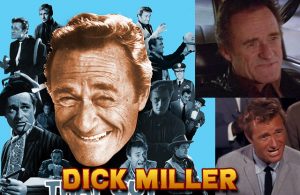
We’ve got FABULOUS guests this year! Dick Miller, the guy from every Roger Corman and Joe Dante movie ever made, will be with us, as will Sybil Danning from BATTLE BEYOND THE STARS and THE HOWLING 2, to name a few. Daniel Roebuck from LOST and Rob Zombie’s HALLOWEEN movies will be signing for free all weekend! We also have BarBara Luna from STAR TREK and the OUTER LIMITS, Academy Award™-winning special effects master Gene Warren, Jr., Lynn Lowry (as you mentioned), and so many more. The complete list is on our website here. Next year I’d love to get John Saxon, as I’ve enjoyed all of his performances.
Not only are you seasoned in the areas of classic film and television fandom from the behind-the-scenes running of conventions, but you’re also a published author (ARCTIC ADVENTURE, an official THUNDERBIRDS novel, VOYAGE TO THE BOTTOM OF THE SEA: THE COMPLETE SERIES – VOL. 2, along with articles published in several fandom magazines). What compels you to write? And what is it about classic pop culture that makes you want to share it with your readers?
I like sharing my joy in all things popular culture with other people. I don’t want to just share my own nostalgic vision on a lot of these subjects — I want to provide readers with context so they can enjoy art on a deeper level. A good example is the graphic novel WATCHMEN by Alan Moore and Dave Gibbons. To anyone who picked it up after 1989, when the Berlin wall came down and glasnost pervaded Eastern Europe, it has a completely different meaning than to those of us who read it while still under the threat of nuclear war. Of course, now might be a good time for a re-read of Watchmen… I’ve written hundreds of articles and interviews for film magazines exposing what goes on  behind the camera because that informs what goes on in front of it. Context makes you view art in a completely different light.
behind the camera because that informs what goes on in front of it. Context makes you view art in a completely different light.
Which classic monster and/or movie would you say is the most neglected and what do you think makes them worthy of attention?
I’ve got a few lesser-known favorites, chief among them I WALKED WITH A ZOMBIE and CURSE OF THE DEMON. They both work to frighten or creep out the viewer on a very base level, and both are visually striking. They both create tension via a sort of poetic nomenclature and subvert the viewer’s expectations. I could recommend many films, but if you haven’t seen these two, add them to your list!
Can you tell us a little about some of your favorite monster kid memories?
The first monster I was ever fascinated by (like many) was King Kong. When I was six years old, I traded a few comic books for a gorgeous poster of angry Kong towering over New York City, Fay Wray in his hand– and it scared me so much that I couldn’t sleep with it on my wall! My mom had to re-hang it in my closet so it wouldn’t keep me up at night in terror.
We see that you’re a huge fan of classic toys and model kit building. Do you remember the first model kit? And more importantly, do you still have it?
Around the same age, I began to see ads on the back of comics for Aurora monster model kits and could barely contain my desire for the whole set. The first one I coveted was the Hunchback of Notre Dame, but the first one I actually bought and built was the Phantom of the Opera. I eventually got Frankenstein, Dracula, The Creature and a few more. Unfortunately, my originals do not survive, but I have re-issues of all of them now. Knowing they’re safe in my storage unit gives me a warm, completed feeling from time to time.
I’m sure all monster kids are dying to know — how does one become the licensing & brand manager for the Bram Stoker Estate? That’s got to be one big dream come true. Can you tell us some exciting things you’ve got planned regarding Stoker’s Estate?
I met Dacre Stoker, who runs the estate and is Bram Stoker’s great-grand nephew a few years ago and we get along well. After seeing his presentations on Bram and Dracula several times, I began to realize how much branding potential was being wasted by not having someone overseeing these matters. I spoke with Dacre and we eventually put together an agreement that made me Licensing & Brand manager for the estate. I’m working with companies in the retail mystery box realm, jewelry, tabletop gaming, and others to try and create products that will extend awareness of Stoker and his works. It’s going pretty well so far.
What was your first taste of monstrous terror, and which classic monsters are your favorites?
Kong! I also love the many creations of Ray Harryhausen, Dracula, Frankenstein, and Creature From The Black Lagoon. I used to be an indiscriminate collector of monster merchandise, but now I’ve narrowed things down to just a few favorites. I no longer feel the need to own everything ever made!
What about your favorite classic television series?
Gerry Anderson’s UFO – the only monsters in it are humans and humanoid aliens, but the protagonist is a bureaucrat, out on the watchtower keeping the Earth safe from invaders. He’s a hero with a briefcase, and the writing of the show made a big impression on me when I first viewed it. There are lots of great miniature effects and explosions, cute girls in silver cat suits, and groovy music, but it remains one of the most engaging and serious television programs I’ve ever seen.
Can you give us five things you’re into at the moment that we should be watching, reading or listening to right now— past or present, well-known or obscure?
I’m afraid my days of being cutting edge are long past! I mostly listen to’70s and ’80s punk and new wave, with a general leaning towards jangly guitar riffs by bands like The Church, or Crowded House. I haunt Netflix and Amazon Prime for new films and shows like THE OA or THE MAN IN THE HIGH CASTLE (also starring Monsterama guest Daniel Roebuck). I read a lot of bad speculative fiction but I’m genuinely amazed when something as good as Jeff VanderMeer’s BORNE comes along. I like Sirius radio now that I have it, but wish it were priced more reasonably. I’m a huge fan of Kazuo Ishiguro’s writing, especially THE REMAINS OF THE DAY and NEVER LET ME GO.
And back to one of our favorite classic monster conventions, MONSTERAMA – anything extra special in store for con attendees this year? Any special events planned we should put on our calendar? So many great things!
Friday we have a concert by our heavy Victorian metal house band, Valentine Wolfe, a tongue-in-cheek séance to raise the spirit of Harry Houdini, Cineprov will be riffing on Irwin Allen’s production of THE LOST WORLD, and we’re screening guest Brian K. Williams’ film SPACE BABES FROM OUTER SPACE, with stars Ellie Church and Alison Maier in attendance. Saturday is the Silver Scream Spook Show screening THE TERROR, which co-stars our guest Dick Miller, plus our annual Monster Prom where we have truly fabulous door prizes. Valentine Wolfe will also be providing a live, original musical score for the classic German film, THE CABINET OF DR. CALIGARI. Dacre Stoker is bringing some of Bram Stoker’s personal effects to display as well. Sunday the Atlanta Radio Theater Company will be performing BRIDES OF DRACULA live onstage. All this plus many other panels, screenings, exhibits, contests, and demos all weekend long!
And last but not least, what are you up to next? Can you give us some details on any other projects you’re currently working on or will be in the near future?
My partner and I are launching a new convention in Atlanta next Easter weekend called SPY CON. If you’re a James Bond, Kingsman, Man From UNCLE or other Spy-fi fan, you won’t want to miss it! We’re still early in the process, but details are available here. And of course, work has already begun on next year’s Monsterama, which will be classic Sci-Fi and space-horror themed, and is slated to take place at the Atlanta Marriott Alpharetta Oct. 5-7, 2018.
All photos courtesy of Anthony Taylor and used with permission.

